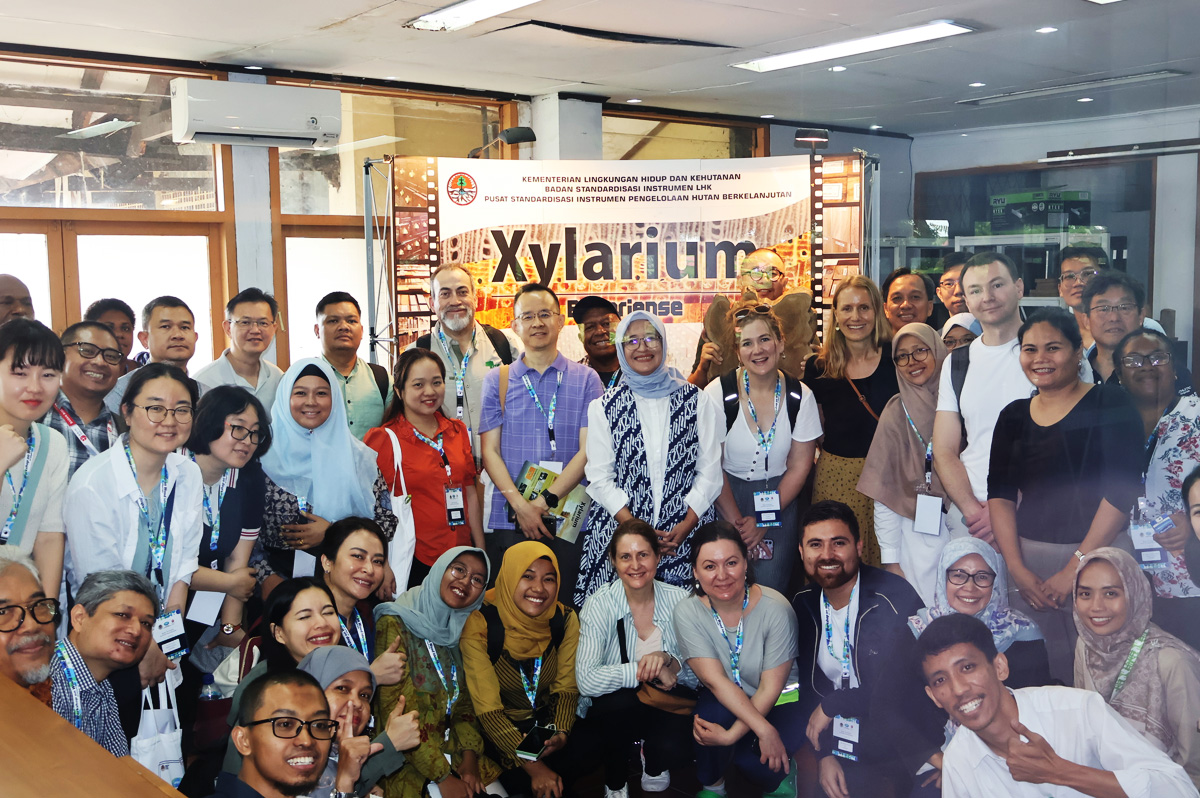

The capacity-building, which was famous with the Bogor Workshop on Wood Identification Technologies, was arranged by the Indonesian National Research and Innovation Agency (BRIN) and the Ministry of Environment and Forestry (KLHK), with support from the APEC Secretariat and APEC EGILAT. About 80 participants attended the workshop, represented by governmental officials, customs, researchers, private sectors, and international organizations. Various researchers, with the backdrop of varied wood identification technologies, spoke about set theories and practices on forensic timber identification to fit the participants' skills.
On 23 April 2024, Dr. Agus Justianto inaugurated the workshop, and subsequently, Dr. Krisdianto welcomed hospitably all the participants, tinged with Indonesian poems. Dr. Ratih Damayanti, the APEC EGILAT Project's overseer, updated the Project's status, spotlighting interventions and their milestones accomplished. On the updates, a research paper was successfully produced underscoring the demand of APEC members on forensic technologies for wood and its readiness level for the technologies implementation. APEC members also observed their interest in benefiting from wood identification in testing illegal wood and its products across the timber supply chain.
On the same day, three different wood identification tools were taught and practiced in the session of wood anatomy, machine vision, DNA-based approach and DNA's standard operating procedures. The experts from the Chinese Academy of Forestry, China and the University of Melbourne, Australia, presented the theories of learning and practices on wood anatomy identification. Wood specimens from Indonesia were used for the participants' macroscopic anatomy examination whereas Xylorix app, a machine vision wood identification, was introduced by Agritic representatives from Malaysia to the participants as one of the ways to digitalize the wood database for timber tracking. An expert from the University of Adelaide, Australia presented the DNA-based solutions, and it was continued by the Forest Research Institute Malaysia, Malaysia expert with the standardized SOP on DNA forensic testing for timber tracking. The participants were inquisitive about these various set theories and practices of wood identification, indicated by many questions from the floor.


The Bogor Workshop agenda continued on the second day, which detailed other wood identification techniques, including near-infrared spectroscopy, mass spectrometry, stable isotope, and Xylotron. The most appealing discussions on the second day were about the usage of these advanced technologies in the realm of forensic timber. These technologies can be applied to profile not only species but also origin, and Xylotron can be deployable in the field for screening tests.
Besides the session, experts from Canada, Papua New Guinea, and Vietnam presented forensic wood identification application states. For instance, Canada and Vietnam have many options for forensic analysis, such as wood anatomy, mass- spectroscopy, machine vision, and DNA. In contrast, Papua New Guinea has utilized wood anatomy and herbarium identification for forensics. Honourable speakers from international organizations, such as ITTO and WorldForest ID, were also present, elucidating global timber trade and standards on wood identification.


On the last day of the Bogor Workshop, the participants visited the Bogor's Botanical Garden and the Xylarium Bogoriense to learn about the preservation of trees and wood for being a living repository of wood identification database. The participants were enthusiastic to learn and deep dive into tropical plant species. The Bogor Workshop continued at Bogor Agricultural University where the participants applied mass spectrometry and DNA instruments for their practices. At the end of the Bogor Workshop, Dr. Ratih Damayanti closed the Bogor Workshop with very touching remarks at the D'Sawah Resort Bogor and looked forward to the participants to contribute in normalizing the forensic timber application in their respective economies.

Ratih Damayanti, Indonesia


